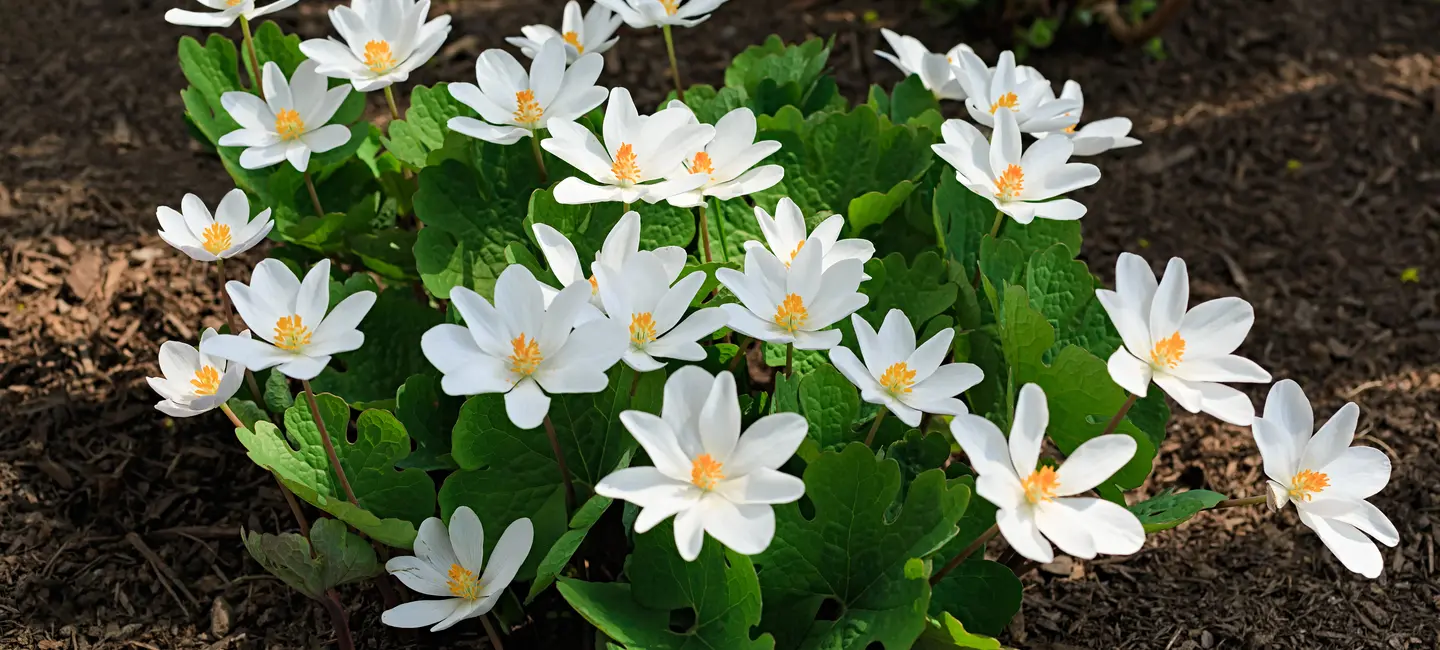
Bloodroot is a plant. People use the underground stem (rhizome) to make medicine.
People sometimes use bloodroot by mouth or apply it to the skin for a long list of conditions, but there is no scientific evidence to support these uses, and using it can be unsafe.
Is It Effective?
NatMed Pro rates effectiveness based on scientific evidence according to the following scale: Effective, Likely Effective, Possibly Effective, Possibly Ineffective, Likely Ineffective, Ineffective, and Insufficient Evidence to Rate.
- Dental plaque. Brushing teeth with a specific toothpaste containing bloodroot and zinc chloride (Viadent Original, Vipont Pharmaceuticals) or using a similar toothpaste containing bloodroot, zinc chloride, and fluoride (Viadent Fluoride toothpaste, Vipont Pharmaceuticals) along with a using mouth rinse containing bloodroot and zinc (Viadent Oral Rinse, Vipont Pharmaceuticals) seems to reduce dental plaque. Also, rinsing with bloodroot mouthwash after a professional tooth cleaning seems to slow the regrowth of dental plaque. In addition, using a bloodroot toothpaste (Viadent toothpaste, Viadent Inc.) and rinsing with bloodroot mouthwash (Viadent Oral Rinse, Viadent Inc.) seems to prevent plaque development in teenagers wearing orthodontic devices.
- Swelling of the gums (gingivitis). Although some conflicting results exist, most research shows that brushing with a toothpaste containing bloodroot and zinc chloride (Viadent Original, Vipont Pharmaceuticals) or using a similar toothpaste containing bloodroot, zinc chloride, and fluoride (Viadent Fluoride toothpaste, Vipont Pharmaceuticals) along with a mouth rinse containing bloodroot and zinc (Viadent Oral Rinse, Vipont Pharmaceuticals) reduces gingivitis. Also, rinsing with bloodroot mouthwash (Viadent Oral Rinse) after a professional tooth cleaning seems to slow the development of gingivitis.
- A serious dental infection (periodontitis). Early research shows that using toothpaste and a mouth rinse containing bloodroot extract and zinc chloride for 2 weeks following usual periodontitis treatment reduces gum swelling and bleeding, but not dental plaque, in people with periodontitis.
- Coughs.
- Spasms.
- Emptying the bowels.
- Causing vomiting.
- Wound cleaning.
- Other conditions.
More evidence is needed to rate the effectiveness of bloodroot for these uses.
Is it Safe?
Bloodroot contains chemicals that might help fight bacteria, inflammation, and plaque.
Bloodroot is POSSIBLY SAFE for most people when taken by mouth, short-term. Side effects include nausea, vomiting, drowsiness, and grogginess.
Long-term use by mouth in high amounts is POSSIBLY UNSAFE. At high doses it can cause low blood pressure, shock, coma, and an eye disease called glaucoma. Also, bloodroot is POSSIBLY UNSAFE when used as a toothpaste, mouthwash, or applied to the skin. Don't let bloodroot get into your eyes because it can cause irritation. It may also cause white patches on the inside of the mouth. Skin contact with the fresh plant can cause a rash. Bloodroot can also burn and erode the skin, leaving an uneven scar.
Special Precautions & Warnings:
Pregnancy and breast-feeding: Bloodroot is LIKELY UNSAFE when taken by mouth during pregnancy and POSSIBLY UNSAFE when taken by mouth while breast-feeding; avoid use.
Stomach or intestinal problems such as infections, Crohn's disease, or other inflammatory conditions: Bloodroot can irritate the digestive tract. Don't use it if you have any of these conditions.
An eye disease called glaucoma: Bloodroot might affect glaucoma treatment. If you have glaucoma, don't use bloodroot unless a healthcare professional recommends it and monitors your eye health.
It is not known if Bloodroot interacts with any medicines. Before taking Bloodroot, talk with your healthcare professional if you take any medications.
There are no known interactions with herbs and supplements.
There are no known interactions with foods.
The appropriate dose of bloodroot depends on several factors such as the user's age, health, and several other conditions. At this time there is not enough scientific information to determine an appropriate range of doses for bloodroot. Keep in mind that natural products are not always necessarily safe and dosages can be important. Be sure to follow relevant directions on product labels and consult your pharmacist or physician or other healthcare professional before using.
Blood Root, Bloodwort, Coon Root, Indian Plant, Indian Red Paint, Pauson, Red Indian Paint, Red Puccoon, Red Root, Sang-Dragon, Sang de Dragon, Sanguinaire, Sanguinaire du Canada, Sanguinaria, Sanguinaria canadensis, Snakebite, Sweet Slumber, Tetterwort.
Information on this website is for informational use only and is not intended to replace professional medical advice, diagnosis, or treatment. While evidence-based, it is not guaranteed to be error-free and is not intended to meet any particular user’s needs or requirements or to cover all possible uses, safety concerns, interactions, outcomes, or adverse effects. Always check with your doctor or other medical professional before making healthcare decisions (including taking any medication) and do not delay or disregard seeking medical advice or treatment based on any information displayed on this website.
© TRC Healthcare 2024. All rights reserved. Use and/or distribution is permitted only pursuant to a valid license or other permission from TRC Healthcare.
